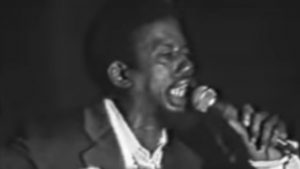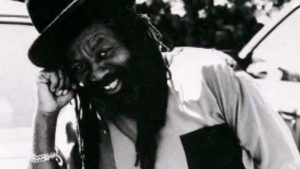It is not uncommon for the criminal justice system in the Caribbean to be questioned. Too often we hear that there is one law for the rich and one for the poor, one law for whites and browns and one for blacks, one law for men and none for women. This thinking results from the way in which society treats women and their issues, the way in which society trivialises issues such as physical, emotional, mental and sexual violence against women. If women are battered and eventually killed by their husbands and partners, there is little or no outrage since women, who are battered, in the minds of a significant number of people, should be beaten if they deserve it. Hence, domestic violence, for example, is not treated by society, the state, the police and the legal system as a social evil which must be eradicated. In the whole scenario, women are treated as non-persons who invite violence on themselves and who are to be held responsible for the violent actions of men such as rape and battering. In fact, I recall some years ago, a Montreal, Canada, judge in handing down his judgement in a particular case said, “rules are like women, they are meant to be violated”.
This statement will form the backdrop to our discussion which looks at the Caribbean criminal justice system as it relates to justice for women. We focus on the way in which the law and the legal system which originated with the state, discriminates against them. This discrimination operates in the interest of the state which, in our view, is characterised, in part, by the ideology of patriarchy, the designation of wealth and notions of racial, and class superiority. To demonstrate our point, we will speak specifically to the cases of physical and sexual violence against women, particularly those of the battered woman and the victims of rape and the way in which they are treated by the criminal justice system.
If we examine the criminal justice system in the Caribbean as it relates to sentencing as a method of punishment in terms of possible class, race and gender issues, we will find that justice has a particular character which most times discriminates against those of our citizens who fall into what has been described as socially disadvantaged or marginalised social classes and groups. While we understand that it is the intention of the state to protect the majority from the few and to protect women specifically, there seems to be, on examination as it relates to women, a gap between this intention and the existence of workable legal options to protect these women. This, therefore, raises a number of questions: for example, are there contradictions within the law? Is the law value free? To what extent can it protect women? How just is the criminal justice system? What is the purpose of sentencing as an instrument of correction and is there any gender bias in this process? Is there a dynamic relationship between the state and the law? Is there an ideology of male dominance and women’s subordination governing the thinking behind the construction of the law and its execution? Who writes the law? For whom is it intended?
In response to these questions, we argue that in these societies, divided as they are by race, class and sex/gender, the law and the criminal justice system is the will of the ruling class or the state. As such, they exist to protect their interests, to keep them in power and to maintain hegemony. At the same time, they act as a means of social control for all those marginalised and disadvantaged social groups: the poor and women, particularly poor women.
The Law and the State
In order to address the issue of gender bias inherent in the criminal justice system in the Caribbean, it is necessary, first, to take a brief look at the relationship between the state, the law and the legal system. By the state we mean, not just government, but all the governing institutions which represent the political and economic coordinates. In this sense then, in societies divided by race, class and gender, the state has a class character, as well as a race and a gender character since patriarchal ideology was critical in structuring the post-emancipation/colonial and neo-colonial state which relegated the poor and blacks to the status of ‘underclass’ and located women and in a uniquely subordinate position, subject to the racism and sexism of the white man, the racism of the white woman and the sexism of the black man. We submit that this being the case, these ‘isms’ have influenced the construction of the state, its institutions and particularly, the framing of the law and the construction of the existing legal system.
In a theoretical and practical sense, the state cannot exist without the law which supports the status quo and the law cannot function without the state which safeguards legal norms. As such, law can be defined as the totality of the standards of behaviour laid down in legal acts and is sanctioned by the state. And, like the state, the law also has a class, a race and sexist character. After all, the law in our various countries was written by men of a particular class and race, and in fact, if the law were to be read without wisdom and social and ideological clarity, one would conclude that all human beings are men as the language of the law is exclusively masculine. It is this law which legitimises the standards which regulate social, political and economic relations and provides judicial sanctions necessary for the ‘normal’ functioning of such relations. It regulates society. In so doing, it formulates social and economic relations between social classes and social groups; it defines the legal status of all social institutions and organisations and specifies the position, rights and duties of individual citizens. Essentially, the law embraces, to a large extent, all aspects of societal life, all forms of people’s activities and all forms of social relations.
In terms of regulating society, we argue that the law is the will of the ruling class. It safeguards the interests of the privileged and is an instrument for keeping the working people and other socially and politically disadvantaged groups in place. In other words, the law functions as a means of social control. Despite this, we would want to believe, as implied above, that the law, as law, is fundamentally fair. But, Dianne Martin (1993) in analysing the criminal justice system in Canada, points out that the principles of fairness (all persons are presumed equal before “Her Majesty’s criminal courts; all persons are presumed to be sane and morally responsible for their actions which are characterized as free choices between socially acceptable conduct and socially reprehensible and dangerous behavior”) are not really ‘fair’ as there continues to be a bias within the system. She points out that “the systematic jailing of wildly disproportionate numbers of poor people, Aboriginal peoples and visible minorities is beyond doubt….” In the case of women, she notes the argument of British criminologist, Hilary Allen “that the [British] criminal justice system not only treats women offenders differently from men because they are women, but also cannot conceive of doing otherwise”. If we accept this argument, particularly since Caribbean law is rooted in British common law, then we have to agree that the equality which exists within the law and hence the criminal justice system is merely a formal equality.
With this in mind, we wish to look at the way in which women, as opposed to men, are treated for committing the same crime and to suggest that women are treated differently because they are women and ideas about women have been socially constructed beginning with a patriarchal interpretation of the Genesis narrative.
Judith Soares, PhD, is Tutor Coordinator of the University of the West Indies Women and Development Unit


About Judith Soares
JudithSoares,PhD,istheheadoftheUniversityoftheWestIndies'WomenandDevelopmentUnit.










